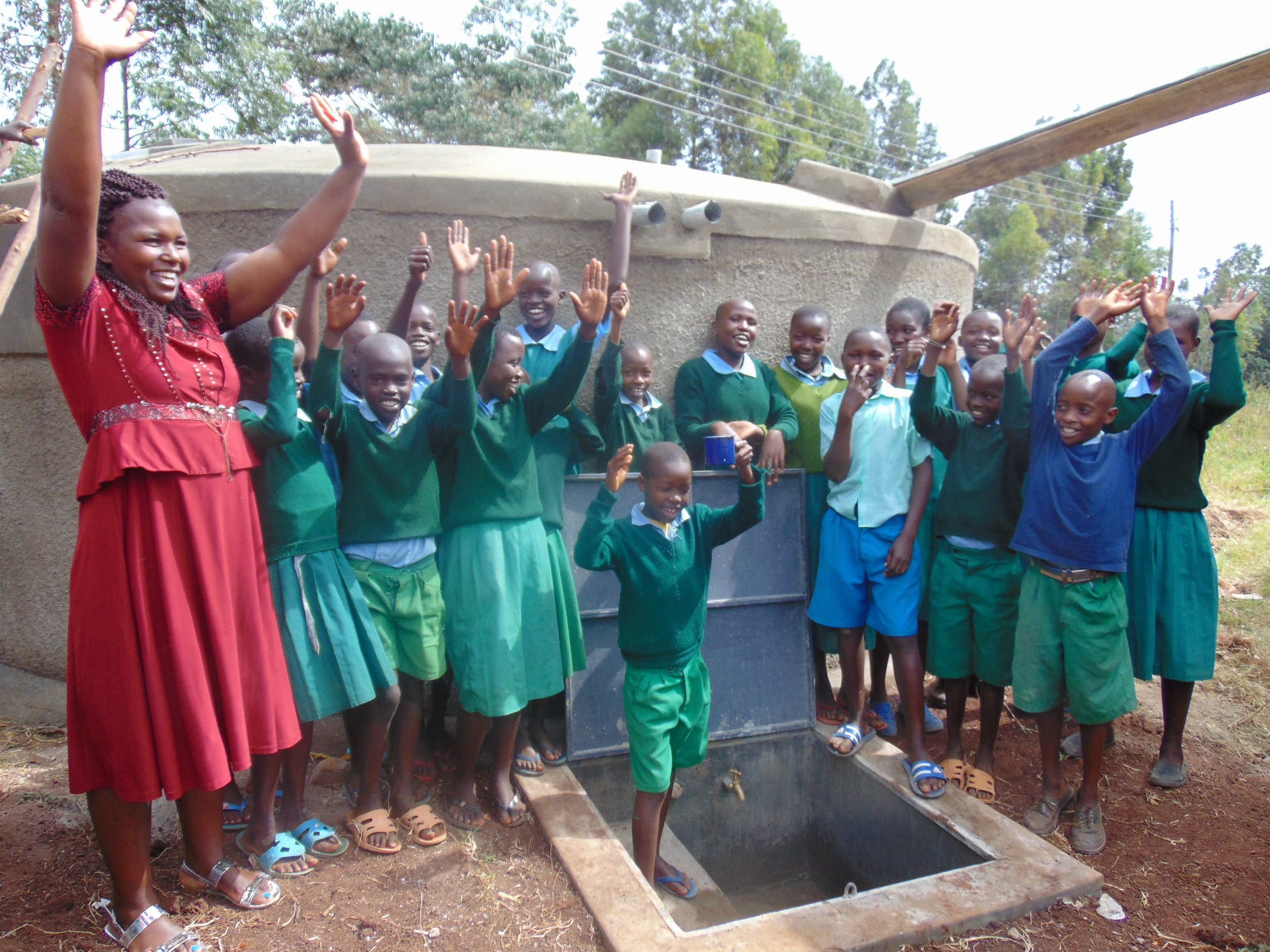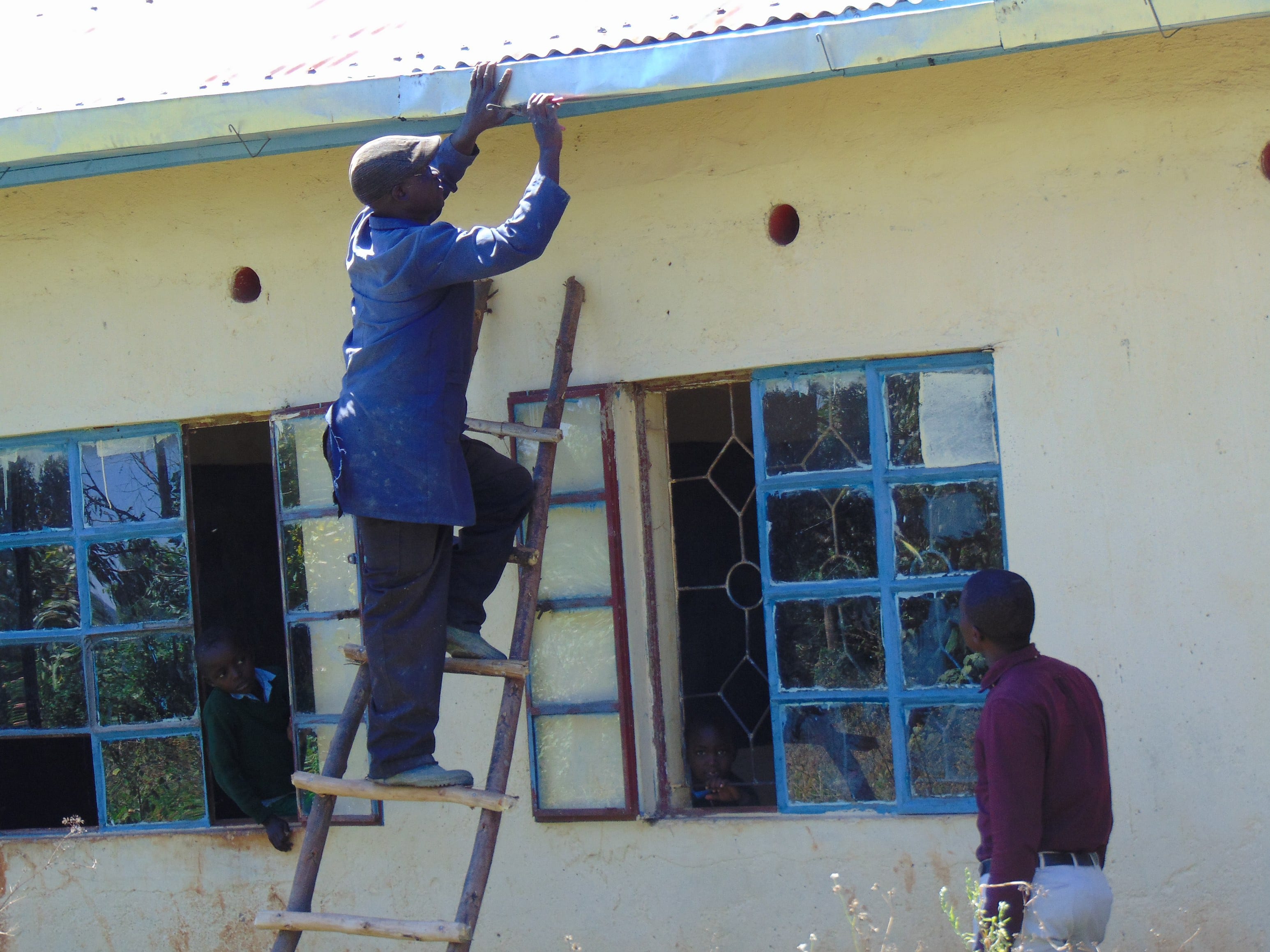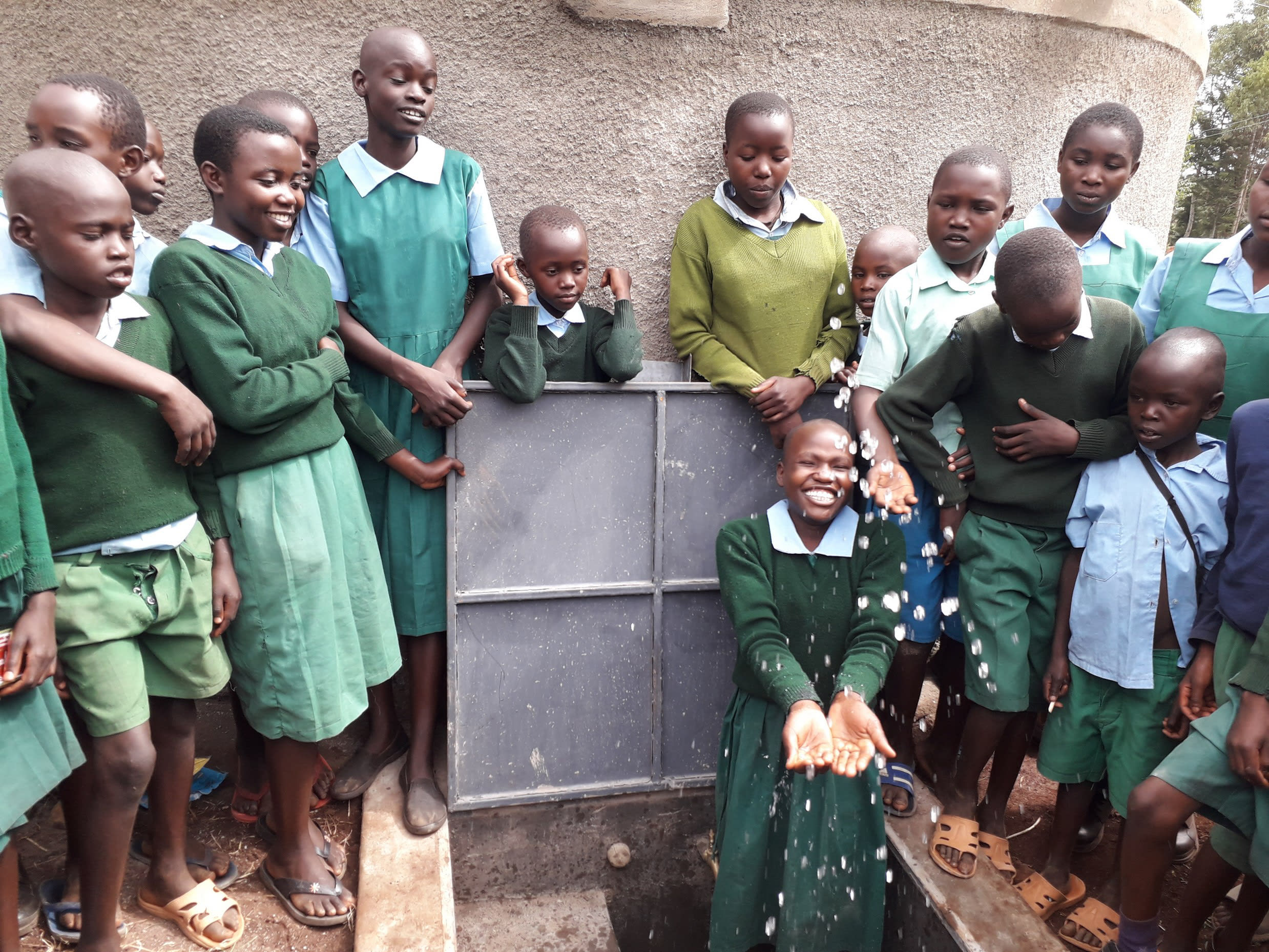Bojonge Primary School is located in the outskirts of Shiru Town in Kenyor Village. The entire area is vegetated in the highlands, and a majority of the villagers work on tea and maize plantations.
On arrival at Bojonge, one first spots the playing field. The schools buildings are far from the gate. Bojonge has nine classes including the early education department, with an enrollment of 371 students. The school also has a great kitchen from where teachers’ meals are prepared.
The buildings are in good condition, but the school is still missing something very important: There isn't enough water on school grounds. This forces students to do the work of finding, fetching, and carrying enough water for drinking, cooking staff lunch, and cleaning.
Students most often go to a spring in the village.
Upon visiting the spring, our first thought was to not only provide water for the students at school but to protect this spring for the community too. But upon talking with the landowner, we learned that this spring has a very low yield which does not make it a good candidate for protection.
Since these students are still young, they carry small plastic containers no larger than 10 liters. These are dunked directly into the spring until full.
Kenyor Village as a whole does not have enough water. People have to walk long distances to nearby villages to fetch this precious commodity when the spring dries up. Due to the lack of clean water, the school has opted not to prepare lunch for the pupils. And any water that the students bring back is used up quickly.
"As you know, water is life and without it our bodies will stop functioning. Unavailability of clean, sufficient water generally affects the smooth running of our institution, and this shows in our general performance as a school," shared Teacher Rosbella Tirop.
The water from the spring is dirty and causes students to suffer from waterborne illnesses like typhoid.
What we can do:
Training
Training on good hygiene habits will be held for two days. The facilitator will use PHAST (participatory hygiene and sanitation transformation), ABCD (asset-based community development), CTC (child to child), lectures, group discussions, and handouts to teach health topics and ways to promote good practices within the school. The CTC method will prepare students to lead other students into healthy habits, as well as kickstart a CTC club for the school.
Handwashing Stations
This CTC club will oversee the new facilities, such as handwashing stations, and make sure they are kept clean and in working condition. The two handwashing stations will be delivered to the school, and the club will fill them with water on a daily basis and make sure there is always a cleaning agent such as soap or ash.
VIP Latrines
"Our school has had a big challenge when it comes to toilets. The number of doors available are not sufficient for our pupils and this has affected our time management as the pupils waste much time going to relieve themselves," said Deputy Headteacher William Kosgey.
"It is our prayer that you assist us put up extra facilities to curb the situation."
Two triple-door latrines will be constructed with local materials that the school will help gather. Three doors will serve the girls while the other three serve the boys. And with a new source of water on school grounds, students and staff should have enough to keep these new latrines clean.
Rainwater Catchment Tank
A 50,000-liter rainwater catchment tank will help alleviate the water crisis at this school. The school will also help gather the needed materials such as sand, rocks, and water from the spring for mixing cement. Once finished, this tank can begin catching rainfall that will be used by the school’s students and staff.
We and the school strongly believe that with this assistance, standards will significantly improve. These higher standards will translate to better academic performance!

 Rainwater Catchment
Rainwater Catchment
 Rehabilitation Project
Rehabilitation Project




































